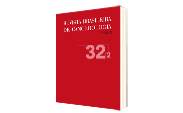Fenretinide: Prevenção em Pacientes Tratadas de Carcinoma de Mama
DOI:
https://doi.org/10.32635/2176-9745.RBC.1986v32n2.3242Keywords:
Fenretinide, Breast Cancer, RetinoidAbstract
Fenretinide (HPR) is a synthetic retinoid which has been proven effective in preventing mammary tumors in animal models. A phase I study has been designed at the National Tumor Instituto of Milan, with the aim of evaluating the tolerability of this drug in humans. In the present study, 101 breast cancer patients have been randomized in to four groups according to the daily drug dosage: 100 mg, 200 mg, 300 mg and placebo. All the patients had been operated on at the same Institute and did not receive any adjuvant treatment (endocrine or chemotherapy). Clinical examination, blood laboratory tests, dermatological and ophthalmologic evaluation have been performed every four weeks. One patient interrupted the treatment at week 12 because lung and bone metastases were demonstrated. One hundred patients have cornpleted the 20th week of treatment and no adverse effects have been recorded. In one case it was necessary to half the dose for three days with the aim of veryfing the possible relationship between a recurrent lymphangitis and HPR treatrnent. The patients went back to the daily in take of 200mg and the symptom disappeared independently. A careful evaluation of the effect of the drug on menstrual cycles show that the observed irregularities are much more probably age related than drug dependent. Depression and emotional lability have also been reported in 18 cases. Nevertheless these symptoms were already present even at the week 0 and did not increase in intensity during treatment During the 20 weeks of study no controlateral breast carcinoma has been observed.
Downloads
References
Fenretinide. Information brochure, Mc Neil Lab Inc March 1983.
Moon Rc, Thompson HJ, Becci JP, et al. Retinamide, a new retinoid for prevention of breast cancer in the rat. Cancer Res 1979; 39: 1339.
Veronesi u et al. chemoprevention of controlateral breast cancer with fenretinide (HPR). Protocol for a clinical trial. Milan, November 1984.
Fenretinide, information brochure, Mc Neil Lab mc, April 1984.
Fenretinide, information brochure, Mc Neil Lab mc, April 1985.
Dalton W, Meyshkens FL Jr., Alberts OS, Booth AR. Phase II study of ferentinide in selected malignancies: advanced of metastatic melanoma, metastatic breast cancer and mycosis fungoides. Unpubhshed data. Tucson,Arizona 1985.
AIberts DS, Edzarde L, Peng YM, Serokman R, Davis TP, Meyskens FL Jr. clinical toxicoIogy pharmacolkinetics of 13-Cis-retinoic acid administered chronically at low doses expected for cancer chemoprevention trials. In press, Tucson, Arizona 1985. DOI: https://doi.org/10.1007/978-1-4612-5006-7_15
Goodman GE, Alberts DS, Earnst DL, Meyskens FL. Phase I trial of retinol in cancer patients. J Ciin Onc 1983; 1:6. DOI: https://doi.org/10.1200/JCO.1983.1.6.394
Osborne MO et al. Breast cancer prevention: Fenretinide - pilot trial New York, October 1985.










